It was an affair to remember as Jordan’s Crown Prince Hussein bin Abdullah II wed Saudi national Rajwa Al-Saif, who by royal decree will now be known as Princess Rajwa Al-Hussein, on Thursday at Zahran Palace in Amman, before the royal couple travelled by motorcade to Al-Husseiniya Palace for a lavish reception.

When the crown prince takes the throne, the princess will be Queen Rajwa. The bride wore a custom-made Elie Saab gown, while Queen Rania opted for Dior.
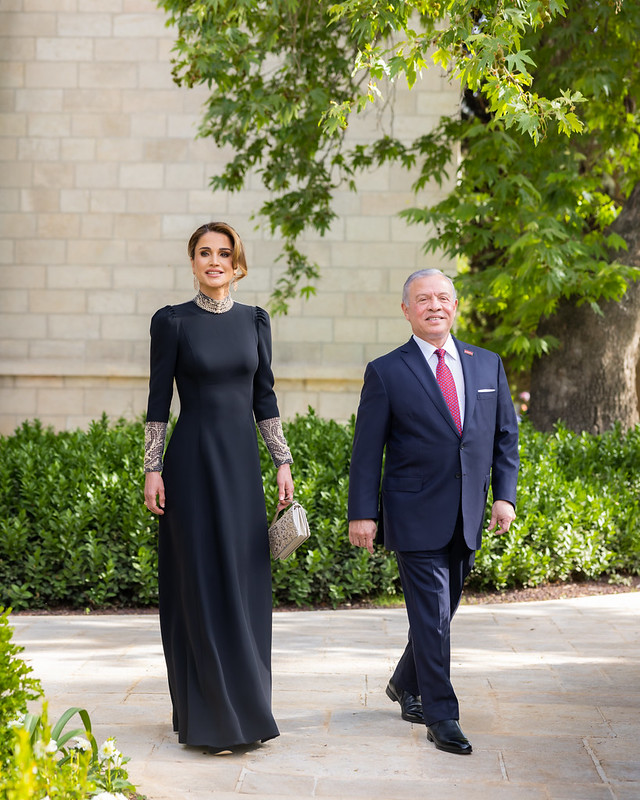
The religious ceremony was held at Zahran Palace, where the crown prince’s parents — King Abdullah II and Queen Rania — wed in 1993. The ceremony was attended by around 140 guests, including members of the Royal Hashemite family, invited royals and heads of state – US President Joe Biden and US First Lady Jill Biden even shared a congratulatory message on social media.
بالنيابة عن الولايات المتحدة، يتمنى الرئيس والسيدة الأولى لصاحبّي السمو الملكي عمراً مديداً بالسعادة. ألف مبروك!
On behalf of the United States, the President, and First Lady wish their Royal Highnesses a lifetime of happiness. Alf Mabrouk!#نفرح_بالحُسين #CelebratingAlHussein… pic.twitter.com/pB6Jn0PW94— U.S. Embassy Jordan (@USEmbassyJordan) June 1, 2023
Guests include dignitaries and royals from around the world, including the UK’s Prince and Princess of Wales William and Kate Middleton; US First Lady Jill Biden; Qatar’s Sheikha Moza bint Nasser; the king and queen of Malaysia; the king and queen of The Netherlands; King Juan Carlos I and Queen Sofía of Spain; Prince Sébastien of Luxembourg; Crown Prince Frederik and Crown Princess Mary of Denmark; Crown Princess Victoria of Sweden and Prince Daniel, Duke of Västergötland; Haakon, Crown Prince of Norway and Hisako, Princess Takamado and her daughter, Princess Tsuguko of Takamado of Japan, among others.

The bride arrived at the palace in a 1968 Rolls-Royce Phantom V that was custom-made for the late Queen Zein Al-Sharaf and was escorted by the Crown Prince’s younger brother, Prince Hashem bin Abdullah II, and Princess Salma bint Abdullah II. Prince Hashem walked Al-Saif to the gazebo where the Islamic marriage ceremony took place.
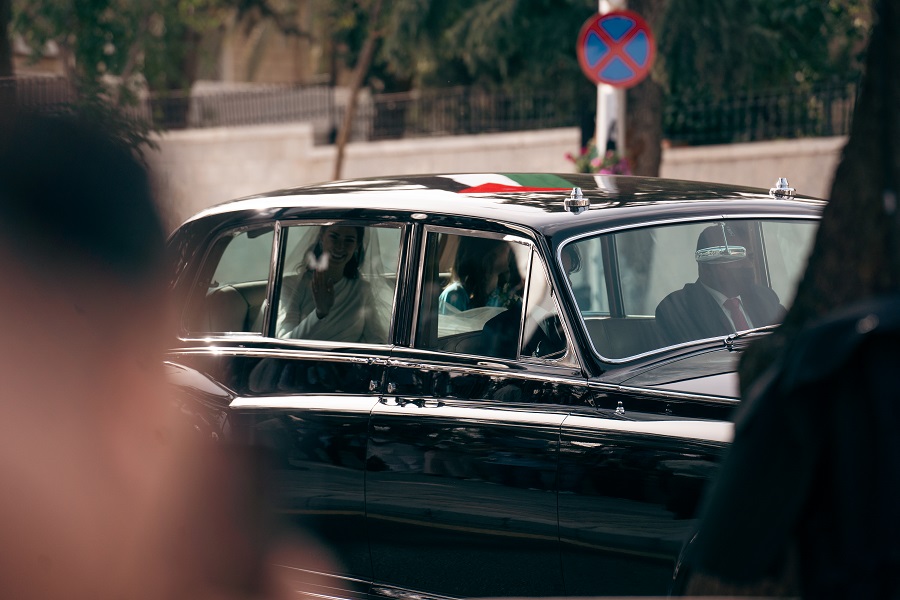

During the ceremony, the bride and groom signed the marriage contract. Royal Hashemite Court Imam Dr. Ahmed Al-Khalaileh, who was appointed to the position in January 2021, presided over the ceremony, which was followed by several women performing the Zaghrouta, or traditional ululation.
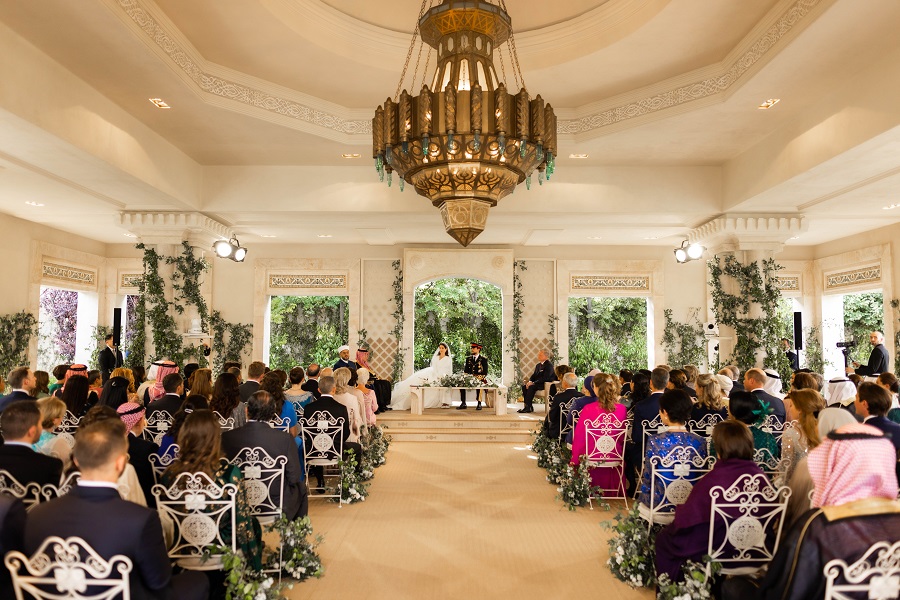
Afterwards, crowds lined the 10km route as the couple traveled to the location of the reception party in a custom 1984 Range Rover as part of a convoy worthy of an Arab royal wedding.

The motorcade featured eight red 1980s Land Rovers and 11 red BMW motorcycles. The vintage machines belong to the Royal Convoy Unit, part of a special military formation known as the Royal Guards. The Jordan Armed Forces Musical Band performed during the event.
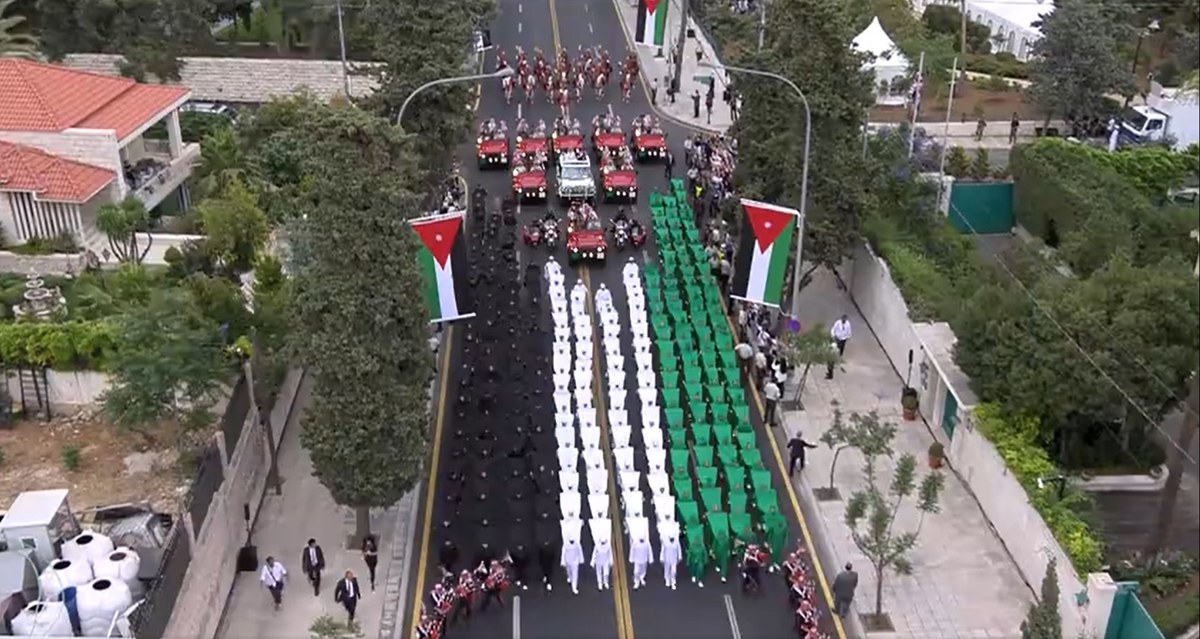
As is customary, the arrival of the bride and groom was announced with a zaffeh by the Jordan Armed Forces Musical Band. All band members wore the red-and-white shemagh, a traditional headdress for men, in addition to their full-dress uniform. After passing through an honorary Arch of Sabers, the couple proceeded through the courtyard amidst a traditional Jordanian zaffeh, toward the greeting stage, where the family greeted more than 1,700 guests. The remainder of the evening featured a variety of performances by local and regional singers, a choir group, Jordanian bands, the national orchestra, and folk dance troupes.
According to the Royal Hashemite Court, the reception space at Al-Husseiniya Palace was designed to showcase Jordanian traditions, craftsmanship, and the country’s natural surroundings. Upon arrival, guests entered on a path that evokes the Jordanian desert, featuring a 20-meter-long handwoven Bedouin rug, created specifically for this occasion by the Bani Hamida Women’s Weaving Project in the village of Mukawir in Madaba.

Surrounded by foraged wildflowers that reflect the native landscape of the weavers, guests were welcomed with traditional Arabic coffee and music as they made their way down the reception. Once inside the reception space, guests were greeted by the sight of native olive trees surrounded by a dune-like display of dates, which represent hospitality in both Jordanian and Saudi cultures. The venue featured an installation of five large-scale mesh arches, inspired by the architecture of the palace and the hues of the desert landscape of Jordan’s Wadi Rum.
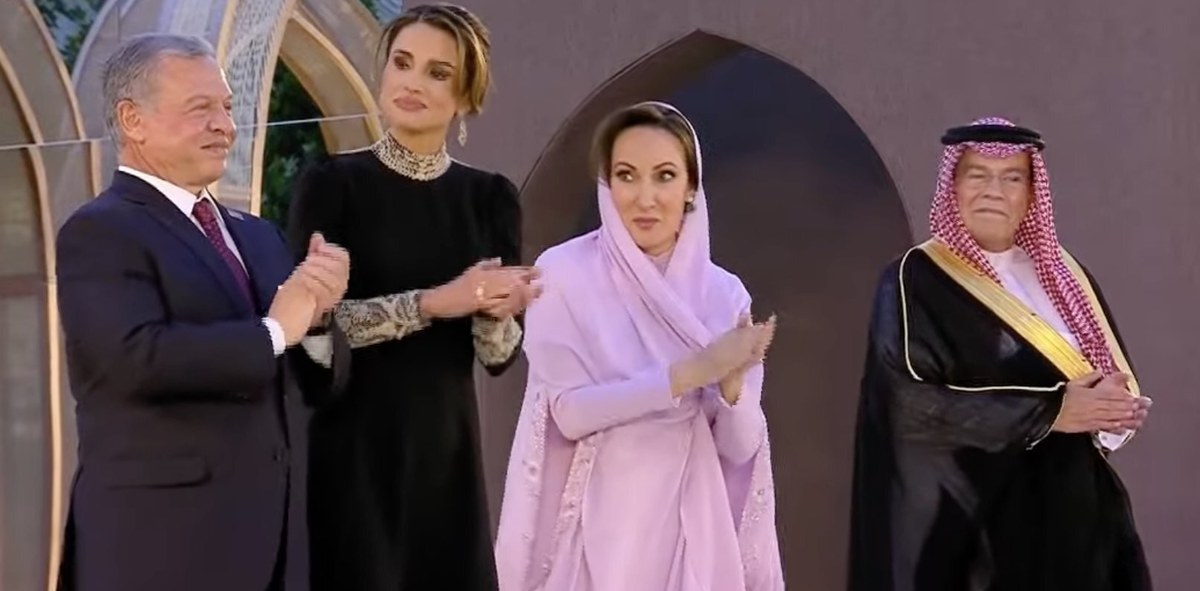
Guest seats were adorned with traditional embroidery patterns, handstitched by women artisans employed by Al-Karma Embroidery Center and the Jerash Women Charitable Society – all of which were established to empower local women and promote traditional handiworks. Guest tables were made from natural Madaba stone and decorated with hand-blown glass vases and traditional clay pottery made by local artisans. The decor also incorporated hand-hammered basalt stone from the north of Jordan. Utilizing local seasonal flowers, the Palace’s archways wre steeped in jasmine. Other design elements paid homage to Jordan’s wheat harvesting season, which is in full swing, with items reimagining the traditional threshing board used to shred wheat and release its grain.
The reception concluded with the bride and groom cutting the wedding cake.
The royal wedding was almost a year in the making, with the couple announcing their engagement in August 2022. The pair got engaged in Riyadh with members of the Jordanian royal family in attendance, as well as Al-Saif’s parents — Khalid bin Musaed bin Saif bin Abdulaziz Al-Saif and Azza bint Nayef Abdulaziz Ahmad Al-Sudairi.
The Al-Saif family traces its lineage to the Subay tribe, who have been present in the Sudair region of Najd since the beginning of the era of King Abdulaziz, the founder of modern-day Saudi Arabia. Meanwhile, Al-Saif’s mother comes from the prominent Al-Sudairi family.


